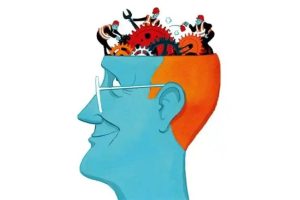To read the press releases, you would think we’ve found the panacea to racism in the form of unconscious bias training. Numerous organizations, from health insurers to breweries, have announced they would put their staff through such programs. The state of Connecticut has made the training compulsory for police officers, and Gretchen Whitmer has required it for Michigan’s healthcare workers after declaring racism a ‘public health crisis’. Google, Facebook, the Fortune 500 and non-profits proudly advertise the programs they put their staff through. But the one rather important question nobody is asking is: does unconscious bias training actually work? And to that question science provides us a clear answer: no, it doesn’t.
A sensible place to start in understanding why unconscious bias training doesn’t work, is to look at unconscious bias itself and what we know about it.
Unconscious bias is the notion that a person’s subconscious makes association between mental representations of objects in memory and that this is a learned mechanism. The problem is that we don’t know whether this is true, or whether any subconscious association reliably translates into real-world behaviors. We do know that humans learn heuristics and that some of these are passed down through genetics, i.e. are hard-wired into our brains. For example, humans have learned to shy away from touching objects that emit light, as this is a reasonable indicator that the object is also hot.
Psychologists are also unable to tell the difference between an unconscious bias and instantaneous perception. Nor do they know the difference between unconscious bias and preference for in-groups (the same behavioral trait through which we decide to reserve our love and care for our families rather than attempting to spread it across the whole population). Equally, it could be the case that people just prefer the familiar to the new. The only thing we know for certain is that we don’t really understand much about how this element of human psychology works.
Despite this gap in our psychological understanding, a group of American academics published something in 1998 called the Implicit Association Test (IAT), intended to detect the strength of a person’s subconscious association between objects in memory. It soon came to be used to measure biases towards racial groups, gender, sexuality, age and religion. The test for racial bias involves a series of tasks in which you are asked to respond as quickly as possible to a series of photos and words, associating them with ‘black’ or ‘white’, or ‘good’ or ‘bad’.
As it became clear that the IAT was being used for a purpose for which it was not designed, Tony Greenwald, one of the academics who co-created the test, spoke out against its use as a test for bias, saying that IAT is only ‘good for predicting individual behavior in the aggregate, and the correlations are small’. But that didn’t stop a cottage industry of unconscious bias testing and training from springing up, and finding willing customers in corporations looking for a quick fix for accusations of racism.
The IAT’s primary flaw is its reliability — a key indicator of the validity of any psychological test. That is to say, if you take the test repeatedly, it should give you broadly the same result. Other well-known psychoanalytic tests, like the IQ test and the Big Five Personality Test, are reliable 80-90 percent of the time, which is considered sufficient for them to be scientifically valid. The IAT is reliable about 50 percent of the time, which is so far away from any degree of reproducibility as to discredit it.
***
Get a print and digital subscription to The Spectator.
Try a month free, then just $7.99 a month
***
When trying to effect any behavioral change, after doing an initial measurement, you carry out an intervention (such as training), then you measure whether it has had any effect. But without a valid measure of people’s initial state of unconscious bias, we have no idea whether it actually exists in that individual, or whether any intervention has worked.
As for the interventions, a 2017 meta-analysis of 494 previous studies of racial sensitivity training programs found that ‘changes in measured implicit bias are possible, but those changes do not necessarily translate into changes in explicit bias or behavior’. Britain’s Equality and Human Rights Commission published its findings in 2018, stating that ‘the evidence for [unconscious bias training’s] ability effectively to change behavior is limited’ and that it may cause a ‘backfiring’ effect, actually making people more biased. And last year the Chartered Institute of Personnel and Development (the UK’s main HR professional body) said ‘unconscious bias training has no sustained impact on behavior’. Yet organizations continue to subject employees to these programs in order to be seen to be doing something — anything — often in the full knowledge that it will have no effect. Employees are unlikely to object, knowing that to do so would be to risk being labeled as racist, or accused of not supporting the organization’s diversity agenda. For most, it’s just not worth the career risk.
The idea that a firm should seek to change its employees’ unconscious thought processes also deserves scrutiny. The nature of unconscious thought is that you don’t even know you are having it. We should be worried that firms are seeking to reprogram their employees’ trains of thought, often through mandatory training, in which the refusal to participate would result in disciplinary action. When delivered by an amateur (and the people teaching these courses are not clinical psychologists), meddling with someone’s subconscious is like sticking a screwdriver into an aircraft engine and waggling it about in the hope it might fix something. We should be very worried about a corporate culture which encourages employers to tinker with their employees’ psyches in whatever manner they see fit, particularly when driven by pseudoscience they barely understand.
This article was originally published in The Spectator’s UK magazine. Subscribe to the US edition here.


















